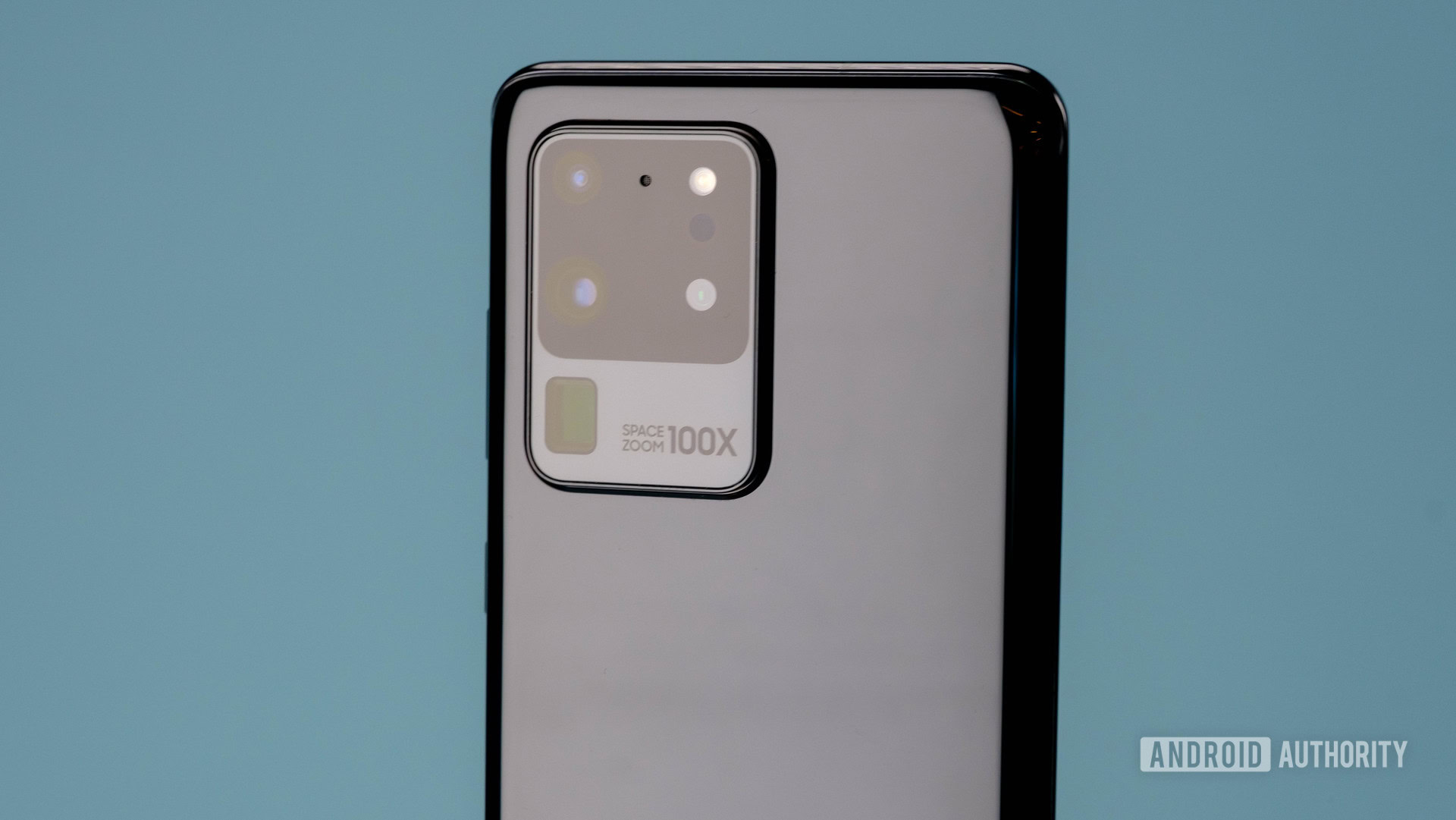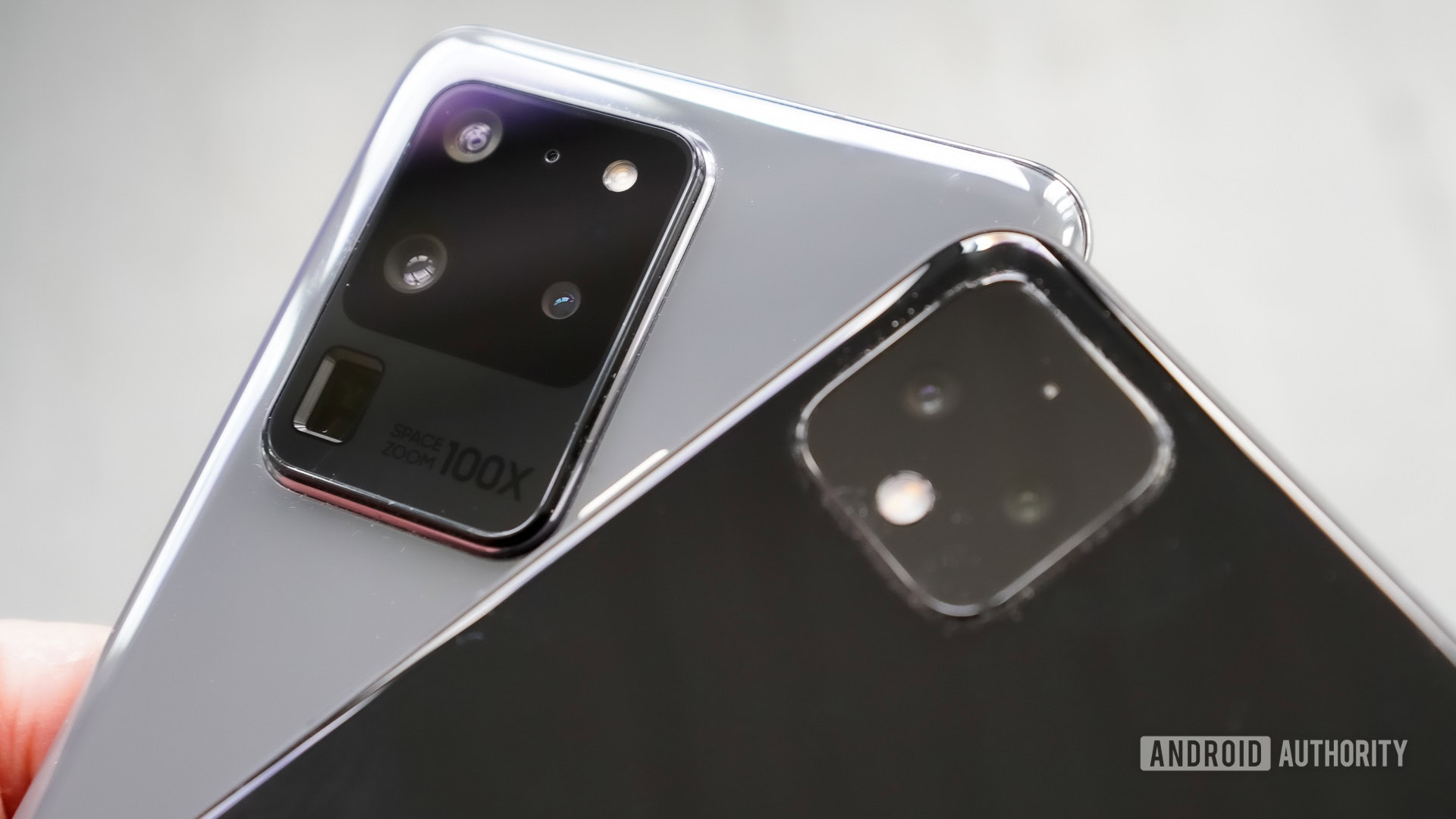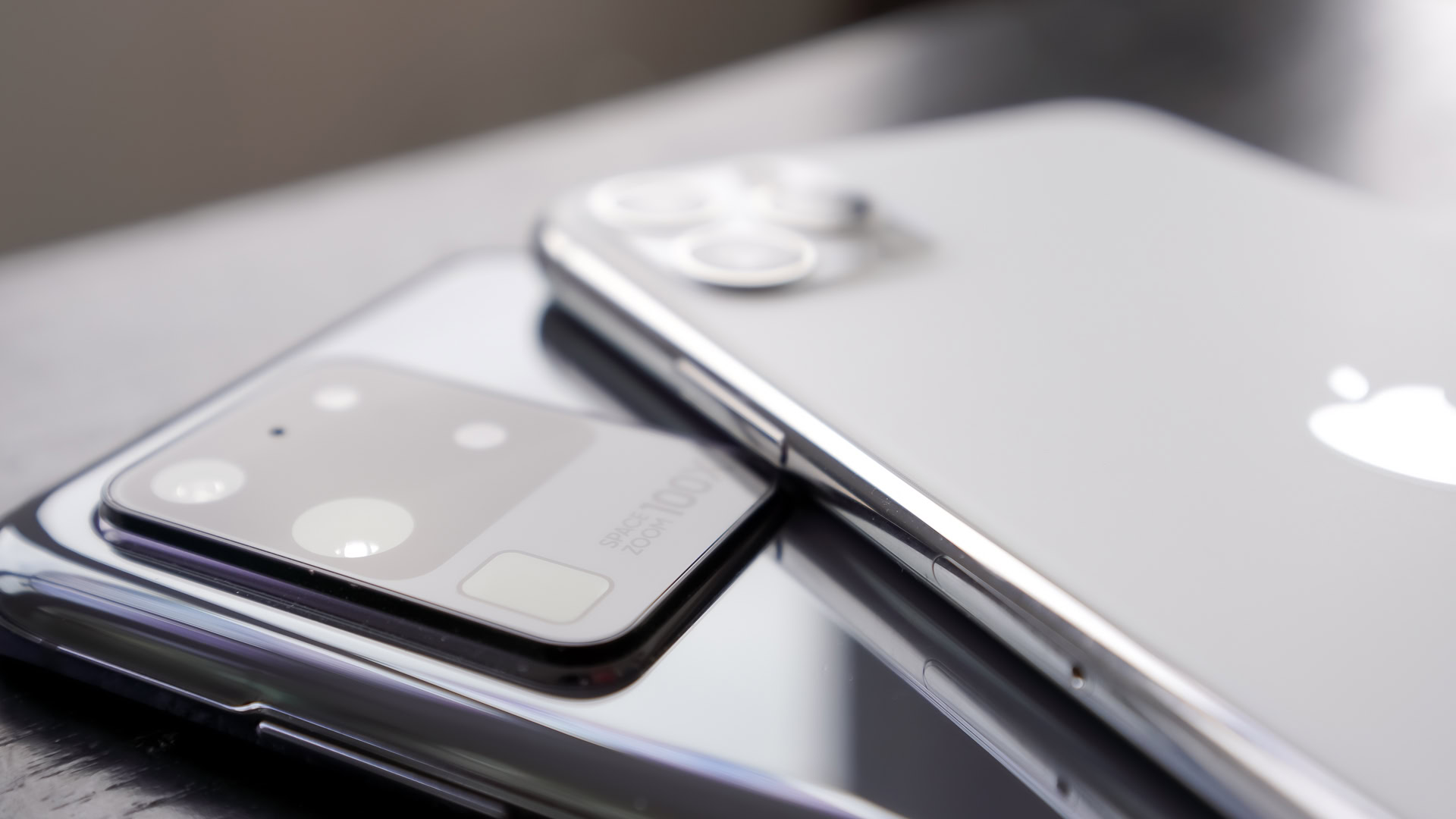Affiliate links on Android Authority may earn us a commission. Learn more.
The Samsung Galaxy S20 Ultra camera makes me think I don't need a DSLR anymore

In pretty much every review of the Samsung Galaxy S20 Ultra (including ours), there’s a huge focus on the camera capabilities of the phone. This isn’t surprising as the Samsung Galaxy S20 Ultra camera module is massive and houses a ridiculous 108MP primary sensor.
It seems that every year, smartphone cameras get better and better. At this point, even a budget Android phone can deliver some great-looking photographs, as we’ve previously demonstrated. As such, it’d be fair to expect the very best photography results from the $1,400 Samsung Galaxy S20 Ultra’s camera.
This got me thinking about the state of actual cameras, specifically consumer-level DSLRs. In years past, people who wanted to take “pro” shots likely would think that buying a DSLR would be the best way to do that. Certainly, a novice photographer using a high-priced DSLR will get better shots as compared to a smartphone, right?

Well, my name is C. Scott Brown, and I’m a novice (read: terrible) photographer. I have a DSLR (a Canon 70D with a $1,200 MSRP, for just the body, bought when it originally launched in 2013) and a Galaxy S20 Ultra. After using the S20 Ultra to take a bunch of photos, I’m starting to wonder if having a DSLR is even worth it for me. Yeah, I’m sure pro photographers will still need the power and versatility of a DSLR for their work, but what about me, a guy who cares more about convenience than quality?
Below you’ll find a bunch of photo examples. Follow along and I’ll try to show you why the Samsung Galaxy S20 Ultra camera might be the “DSLR” I’m looking for.
Daylight outdoors
In this first photo set, you’ll see an example of what I saw with nearly every shot from the two devices: the Samsung Galaxy S20 Ultra camera saturates the colors a lot while the Canon 70D delivers a flatter, more neutral image. Note the differences between the sky and the grass in each photo.
The DSLR shot here produces a more realistic image. However, when you’re sharing things on Instagram or just sending a photo to your friends in a text, realism isn’t too necessary. I’m not submitting this picture to a photo contest, I’m just trying to capture where I am and what I’m doing. In that respect, the S20 Ultra shot just looks nicer.
Zoom
After capturing the previous photo set, I zoomed the Canon 70D’s 18-55mm lens all the way in, which approximately replicates a 3x zoom. I then zoomed the Samsung Galaxy S20 Ultra camera in by 3x. The results of both those shots are what you see above.
Once again, you can see a lot more saturation in the S20 Ultra shot, but the clarity of both shots is crystal clear.
Keep in mind that the S20 Ultra has optical zoom up to 4x, so technically the zoom capability of the S20 Ultra is superior to the Canon 70D’s lens. Not to mention that once you go beyond 4x with the Ultra, you can use hybrid zoom for a bit and then purely digital zoom to capture those far away images. Meanwhile, without a specialized (read: expensive) lens, the DSLR can only do 3x and that’s it. That said, you can always replicate digital zoom by cropping and enlarging images taken with the DSLR.
Texture detail
This shot is probably the most egregious example of the Samsung Galaxy S20 Ultra camera going way overboard with the color saturation. The help box as captured by the Canon 70D is old and faded as it looks in real life, while the S20 Ultra makes it look like it is brand new. The color saturation also makes the bricks look a lot darker than they really are.
However, the S20 Ultra does bring out more of the detail on the top ledge of the brick wall. You can see all the cracks and peelings much more clearly even with the bright sun coming down on it.
This is one of the few examples on this list where I will admit the DSLR does a better job. I want my photos to look pretty, but I don’t want them to represent a false reality.
Close-up
This shot is a great example of how versatile the Samsung Galaxy S20 Ultra camera can be for the average person as compared to a DSLR. Getting up really close to the help box and trying to capture the detail of the “Help” sign was a breeze with the S20 Ultra. However, the Canon 70D’s lens couldn’t handle focusing that close to the subject.
Obviously, the power of the DSLR is that I could easily swap out the 18-55mm lens for another that would be better suited to this task. But, once again, that would require spending hundreds of dollars on a different lens and then needing to carry that with me. The Galaxy S20 Ultra, though, fits in my pocket and needs no accessories to get this shot.
Bokeh/portrait mode
In the days before multiple lenses on smartphones, bokeh — or portrait mode as its been called — was performed using computational means. Now, something like the Samsung Galaxy S20 Ultra camera can use optics mixed with algorithms to duplicate the purely optical bokeh on a DSLR such as the Canon 70D.
Above, you can see the differences between these two effects. Interestingly, in this example, the details of the shot get blown out in the photo from the Galaxy S20 Ultra, while the Canon 70D delivers much more clarity. This is a bit of a reversal from the other shots I got in this test.
Regardless, both shots look great and the bokeh effect produced from both systems looks fine to me. I’m sure arguments could be made that the DSLR shot is “better,” but for my needs, I would gladly accept the S20 Ultra shot if it means I can leave my DSLR at home.
Color
With the Samsung Galaxy S20 Ultra camera tending to put a lot more saturation in its images, it should be no surprise that in the color example above that’s exactly what happens. Interestingly, I think the colors in the mural are actually more life-like in the Galaxy S20 Ultra shot as compared to the Canon 70D.
However, the yellow hydrant looks far too yellow in the Galaxy S20 Ultra photo. The Canon 70D image is much more realistic in that regard. Really, though, would I want to lug around a DSLR instead of using the phone in my pocket because fire hydrants will appear more lifelike?
Harsh lighting indoors
Of all the images in this test, this is the one that I think is the most difficult to spot the differences. If you put down the photo from the Samsung Galaxy S20 Ultra camera and the one from the Canon 70D in front of me, I don’t think I’d be able to tell them apart.
The only real difference is that the Galaxy S20 Ultra image looks to be a bit brighter. But the colors and clarity appear very much the same across both images.
Person
One of the most consistent complaints about the Samsung Galaxy S20 Ultra camera is its penchant for smoothing over people’s faces. Unfortunately, these complaints are only backed up by my test images here, as my face looks like it is one continuous color with no imperfections at all.
While I appreciate Samsung trying to make my face look younger and healthier, the Canon 70D shows my face in a much more realistic light. Hopefully, Samsung has heard the complaints about how excessive its image smoothing is for shots like these and will issue an update to fix the problem soon.
Still, when it comes to selfies at least, I’d much, much rather use a smartphone to take them. Have you ever tried to take a selfie with a DSLR and no tripod? It’s not easy.
Sunlight indoors
I’m lucky to have a house with tons of natural light. I opened up the curtains in my bedroom and let as much sunlight flood in as possible and took the shots above. Although you can’t see, directly behind the camera are two large windows giving all the backlighting you could ever need.
In this example, I think the Samsung Galaxy S20 Ultra camera does a better job of showing just how bright it gets in my bedroom. The shot from the Canon 70D makes the room look almost dim in comparison, which is definitely not the case.
Lowlight indoors
For these shots, I simply replicated the same shot I took in the previous section but closed all the curtains and blinds. As you can see, the bedroom is still plenty bright in both shots, once again emphasizing how bright it gets in there.
The Samsung Galaxy S20 Ultra camera didn’t handle this shot too well. It didn’t know what to do with the loft window being so bright and the rest of the room being so dim, so it blew out the top portion of the picture. The Canon 70D did a better job keeping things even.
I should mention that the shots on this list taken in my home would be the best times to use a DSLR since I could just take it out of my bag and snap some images. But would I need to do that for all of these? I don’t really think so.
Pets
This image of my cat Luther looking out the window shows how fluffy and adorable he is. As we’ve come to expect, the Samsung Galaxy S20 Ultra camera delivers a brighter shot with a lot more contrast while the Canon 70D is more muted.
In this case, I feel like the Galaxy S20 Ultra delivers the shot I would want. While the Canon 70D’s image might be more realistic, I probably would have tweaked it in post-processing to make it look like the S20 Ultra’s shot anyway. In essence, Samsung saved me that step.
Food
People love taking pics of their food, but it can be hard to get a decent shot in dimly lit restaurants. I feel like both the Samsung Galaxy S20 Ultra camera and the Canon 70D did a good job here, although, interestingly, the Canon 70D delivers a more saturated image than the S20 Ultra.
One thing to keep in mind about photos like these is that taking a picture of your food with a smartphone is a normal occurrence. Most people wouldn’t bat an eye if they saw you do it. Taking a pic of your food with a DSLR, though, makes people think you’re a pretentious food critic. I know I felt like one taking these photos. For that reason alone I’d rather use a smartphone for this than a DSLR, regardless of how good the photos turn out.
Obviously, DSLRs are still good

Although this article is mostly me arguing that the average consumer doesn’t need a DSLR to capture their day-to-day images, DSLRs still do offer plenty of things that smartphones cannot. I’ve already mentioned how swappable lenses make DSLRs powerful and versatile, but there are a few other things to mention.
One of the biggest things DSLRs offer over smartphones is battery life. If you’re just snapping photos occasionally, your DSLR battery might not need to be charged for weeks or even months. If you’re recording video or snapping hundreds of photos every day, obviously, your battery life will suffer. For normal use, though, a DSLR battery will almost always out-perform a smartphone battery. And when the battery runs out, you can swap it for a charged one, something that’s not been possible on most smartphones for years.
Another thing DSLRs have over smartphones is versatility. With my Canon 70D, I can tweak and control more settings than I can count. Doing so would allow me to capture the precise image or video I’m looking for. However, I would need to understand all those settings, know what they do, and know how to tweak them, which is what separates novice photographers from pros. It still stands, though, that a good DSLR can do so much more than a smartphone, regardless of what camera app you’re using.
Finally, DSLRs are, in general, more rugged than smartphones. Most smartphones these days are made almost entirely of glass, so one bad drop and they are done for. My Canon 70D, though, is built like a tank. I feel like I could drop my DSLR dozens of times onto a concrete surface and only come away with some cosmetic problems at the worst, while I wouldn’t feel comfortable dropping the Samsung Galaxy S20 Ultra even once on nearly any surface.

The bottom line is that I am in no way saying that DSLRs are obsolete because you can just use the Samsung Galaxy S20 Ultra camera. DSLRs have their place and will always be essential for professionals. The photos above, though, show that Joe Schmo (a.k.a. me) will get very comparable results with a smartphone and a DSLR — so why carry around both?
What do you think? Did the Galaxy S20 Ultra hold its own or does it still fail in comparison to a DSLR? Are you still interested in owning a DSLR and a smartphone, or have you gone all-in on smartphone cameras? Tell us your thoughts in the comments!